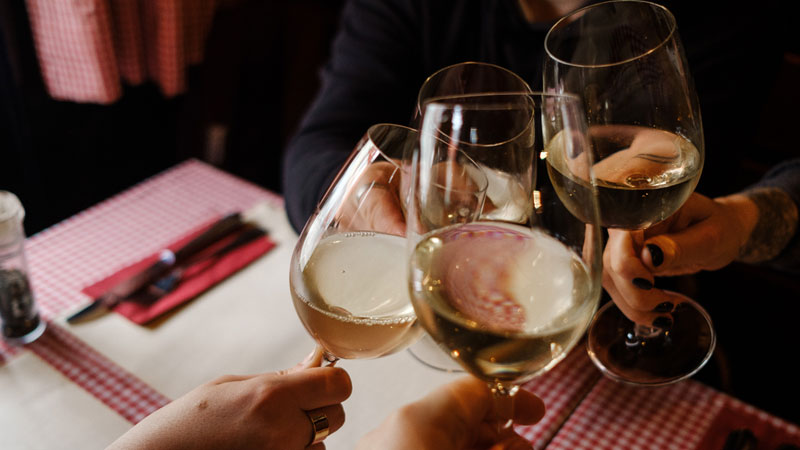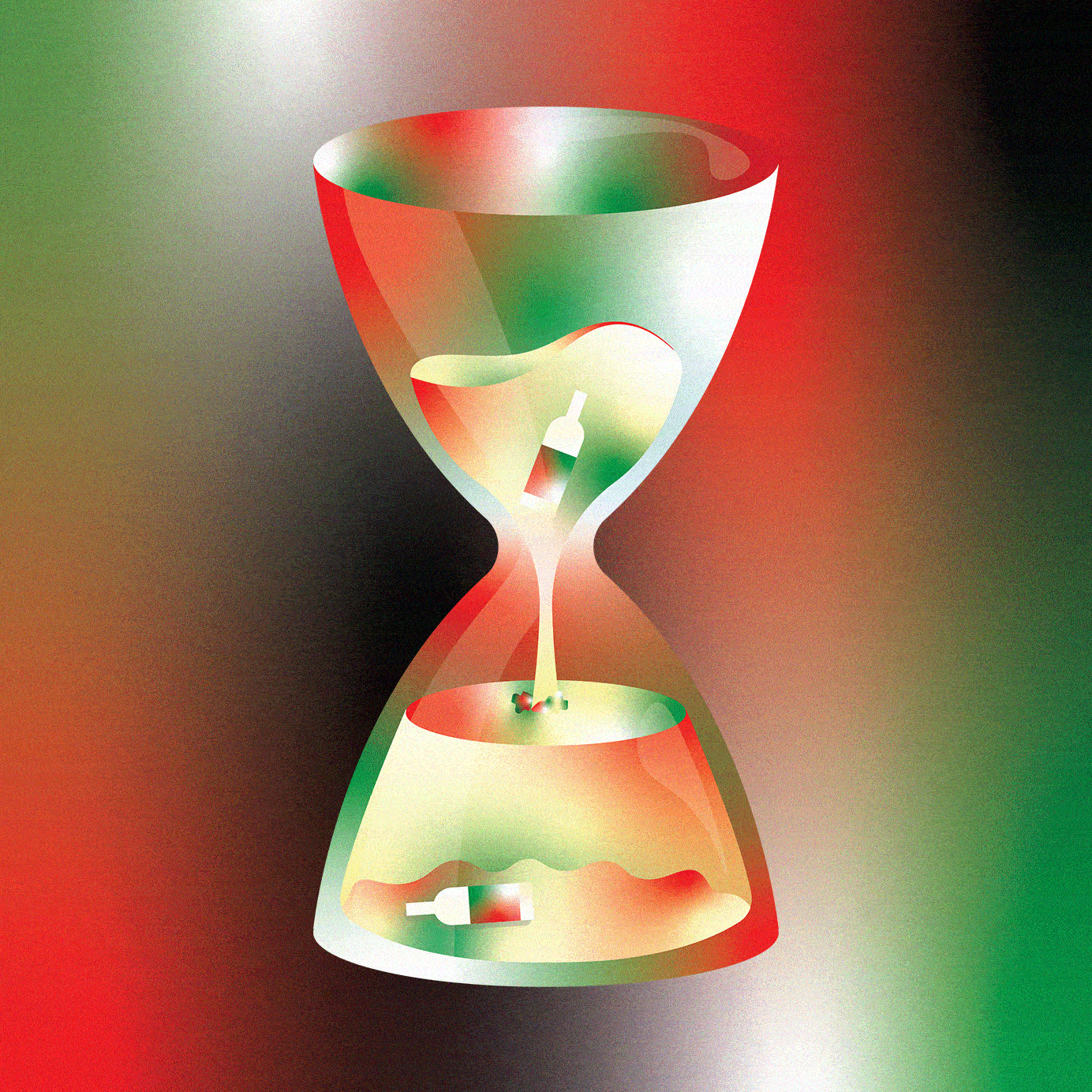In general, it’s relatively easy for wine drinkers to wrap their heads around the idea that certain red wines improve with age. Offering restaurant-goers or wine shop patrons a 10- or 20-year-old bottle of Bordeaux, Barolo, or Burgundy might come with sticker shock, but the concept won’t be scoffed at. Try to do the same with white wines, and you’re much less likely to get traction, especially if you go away from white Burgundy or Riesling, the two whites most often cited when talking about ageability. That’s unfortunate in the case of certain Italian white wines, which can often require a decade or more of aging before they evolve beyond the kind of bright, zippy bistro sippers we most often think of when we think about Italian whites.
It Takes Time
Chris Tanghe, chief instructor with GuildSomm, explains how youthful expressions of Italian whites can mask their aging potential. “The ageability of white wine is largely dependent on one of two things: acid and sugar,” he says. “In their youth, when you have something that’s age-worthy, dry table wine will have an absence of sugar and a plethora of acid. That acid is so much at the forefront, so you have acid and fruit and not a whole lot else going on: a lack of complexity. Those wines come off as pretty one-dimensional, and sometimes not enjoyable to drink. What also adds to the general problem of youthful wine is that most Italian varieties and wines have a quite bitter finish, so the acidity on top of bitterness makes for a pretty brutal wine, especially if you’re not used to drinking that stuff. When you add age and oxidation, those elements balance out and bring out other flavors and smells. In my tasting experience, there are a lot more components that show with age. They might be there in the wine’s youth but not tasteable or smellable.”
That seeming paradox of Italian white wines goes a long way to explaining why they’re usually ignored when it comes to discussions about the great white wines of the world. The notion that Chardonnay or Riesling might take a decade or more to mature into fullness is a readily accepted fact in the modern wine world, but making the same assertion about Verdicchio or Ribolla Gialla mostly draws stares. For Samantha Germani, beverage director at Philadelphia’s Rittenhouse Hotel, older Italian whites offer a great opportunity to surprise guests. “For tasting menus, we use Italian white wine a lot,” she says. “It is definitely something I have to talk to guests about [but then] they will come back and ask for those wines.”
Finding the Right Variety
Henry Davar, the former wine director at New York’s Del Posto and a faculty member at the Vinitaly International Academy, is a particular champion for one Italian white grape: Verdicchio, especially from the Marche. While simpler wines made from Verdicchio might be best enjoyed young, in his eyes Verdicchio Riserva merits significant patience. “It might change very little during the first seven or perhaps even 10 years of its life,” Davar says. “At which point it might enter a new phase in its evolution. For one, Verdicchio will ‘put on shoulders,’ becoming broader and more structured on the palate. It can also take on a mouth-coating character, and the fruit flavors tend to become more exotic, even tropical or honeyed. The best Verdicchio Riservas can age 20 years or more.”

For many sommeliers and wine professionals, varieties beyond Verdicchio also offer significant aging potential. Friulano, Malvasia, and Ribolla Gialla from Friuli in the northeastern corner of Italy, Garganega (the principal grape in Soave) from the Veneto, Fiano from Campania, and Carricante from Sicily. In all these cases, the youthful wine can be pleasant, if unremarkable, while the aged version is almost indistinguishable. Consider Davar’s divergent tasting notes for Fiano: “Young Fiano wines may offer delicate aromas of yellow flowers, apple, pear, citrus, anise, almond, and hazelnut and are suited to antipasti and light seafood dishes. Mature wines may offer aromas of dried fruit, dried flowers, acacia honey, ripe citrus, tropical fruit, tea, tobacco, and petrol and would be suited to more piercing or intensely flavored foods.”
Overcoming Skepticism
Yet getting past pre-existing biases is tricky. Matthew George, sales consultant at Breakthru Beverages Nevada and the former lead sommelier at Rivea in Las Vegas, explains the challenge these wines present. “Old wines look great and can be excellent gems on a list, but we have to source carefully and thoughtfully for these wines,” he says. “It takes a considerable program to sell these wines effectively. If I have to coax the buyer to take on the wine, there is very little chance it will ever leave their cellar. It can take serious knowledge of the food and the wine, and the customer for that matter, to place a great aged Italian white. Knowledge as a tool is considerably more important with an aged Italian white. Every time a wine of this style was sold it was for sure a conversation. An older Italian white doesn’t just land on someone’s table.”
So what’s the curious drinker to do when spotting a 10- or 15-year-old bottle of Verdicchio, Soave, or Fiano on a wine list or store shelf? Step one is to get help and ask questions. Germani is often quizzed about older bottles of Italian white wine and whether they’re still enjoyable. “We always reply if it’s on the list that means we believe in the wine and what it is capable of outside of the bottle,” she says. While an aged Italian white wine might require a leap of faith, it can also offer rewards comparable to the iconic whites of France and Germany at a fraction of the cost.
